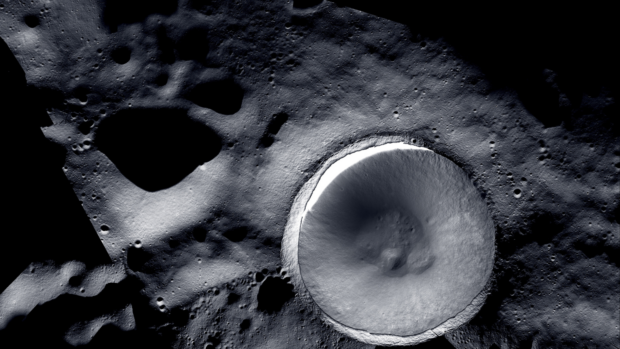The National Aeronautics and Space Administration (NASA) recently shared captivating images from its new mosaic composed of pictures taken by the Lunar Reconnaissance Orbiter Camera and ShadowCam. These images of the Moon provide an unprecedented level of detail, revealing its ancient beauty. However, their significance goes beyond aesthetics. NASA believes that these pictures could help in the search for ice deposits that contain essential rocket fuel and life support components. Just when we thought we knew everything about our closest neighbor in space, these new technologies open up new possibilities for discovery. Perhaps they will even lead us to clues about alien life or hidden caches of valuable chemicals. The applications for this technology are not limited to the Moon alone – NASA could potentially use it to capture higher-quality images of other planets, igniting our curiosity about the mysteries of the universe.
Let’s delve deeper into the functions of these groundbreaking NASA Moon cameras. The new mosaic image showcased by NASA is created by combining images from two sources: the Lunar Reconnaissance Orbiter Camera (LROC) and the ShadowCam. The LROC, which has been operational since 2009, captures incredibly detailed photographs of the lunar surface. However, it is unable to capture images of the Moon’s permanently shadowed regions where direct sunlight does not reach. To overcome this limitation, NASA developed the ShadowCam, an instrument aboard the Korea Aerospace Research Institute (KARI) spacecraft named Danuri. Launched in August 2022, ShadowCam is 200 times more sensitive to light and can function even in extremely dim conditions. It relies on sunlight reflected off Earth or lunar geologic features to capture images in the shadowed areas. However, due to its high sensitivity, it cannot produce clear images of Moon regions that receive direct illumination without overexposure. To create a comprehensive view, NASA merged the images from LROC and ShadowCam into a mosaic, combining the strengths of both cameras. A mosaic is formed by combining small images or tiles to create a larger and more detailed image. In this case, ShadowCam was used for the permanently shadowed regions, while LROC captured the sunlit crater flanks and rim. The result is a breathtaking image that simulates the experience of being an astronaut floating just above the lunar surface. More importantly, this high-resolution mosaic provides NASA scientists with an enhanced view of the lunar South Pole region, which remains largely unexplored. This region is of great scientific interest as it is believed to contain ice deposits and other frozen chemicals that can offer valuable insights into the development of the Moon and our solar system. These ice deposits may also hold hydrogen and oxygen, which are crucial for life support systems and rocket fuel. Therefore, the images captured by these Moon cameras have immense potential for facilitating future lunar missions and advancing our understanding of space.
Now, let’s explore some of NASA’s other fascinating projects that are equally, if not more, captivating than the Moon cameras. For instance, NASA is considering sending the humanoid robot Valkyrie to explore uncharted lunar territories to ensure their safety and feasibility for human exploration. As of now, Valkyrie is fulfilling its mission by overseeing oil rigs in Australia, specifically at Woodside Energy facilities, ensuring the safety of human workers. In return, Woodside Energy collects data on Valkyrie’s performance, which allows NASA to further develop and improve the robot. Additionally, researchers are exploring the possibility of using AI chatbot technology, similar to ChatGPT, to facilitate communication between astronauts and their spacecraft. Dr. Larissa Suzuki is spearheading this ambitious project, aiming to enable conversational interactions between astronauts and space vehicles. The AI chatbot would provide alerts and share interesting findings from the solar system and beyond. This technology is crucial as it eliminates the need to send an engineer to space every time a space vehicle goes offline or faces software issues.
In conclusion, the NASA Moon cameras have provided us with an extraordinary perspective on our oldest satellite, the Moon. Through these cameras, we can witness the Moon’s beauty and mysteries in unprecedented detail. Furthermore, these images hold the potential to uncover valuable resources that can fuel future lunar missions and support life in space. To learn more about the NASA Moon cameras and view their latest image, visit the space agency’s official blog. For more updates on digital trends and tips, don’t forget to check out Inquirer Tech!
Denial of responsibility! Vigour Times is an automatic aggregator of Global media. In each content, the hyperlink to the primary source is specified. All trademarks belong to their rightful owners, and all materials to their authors. For any complaint, please reach us at – [email protected]. We will take necessary action within 24 hours.


